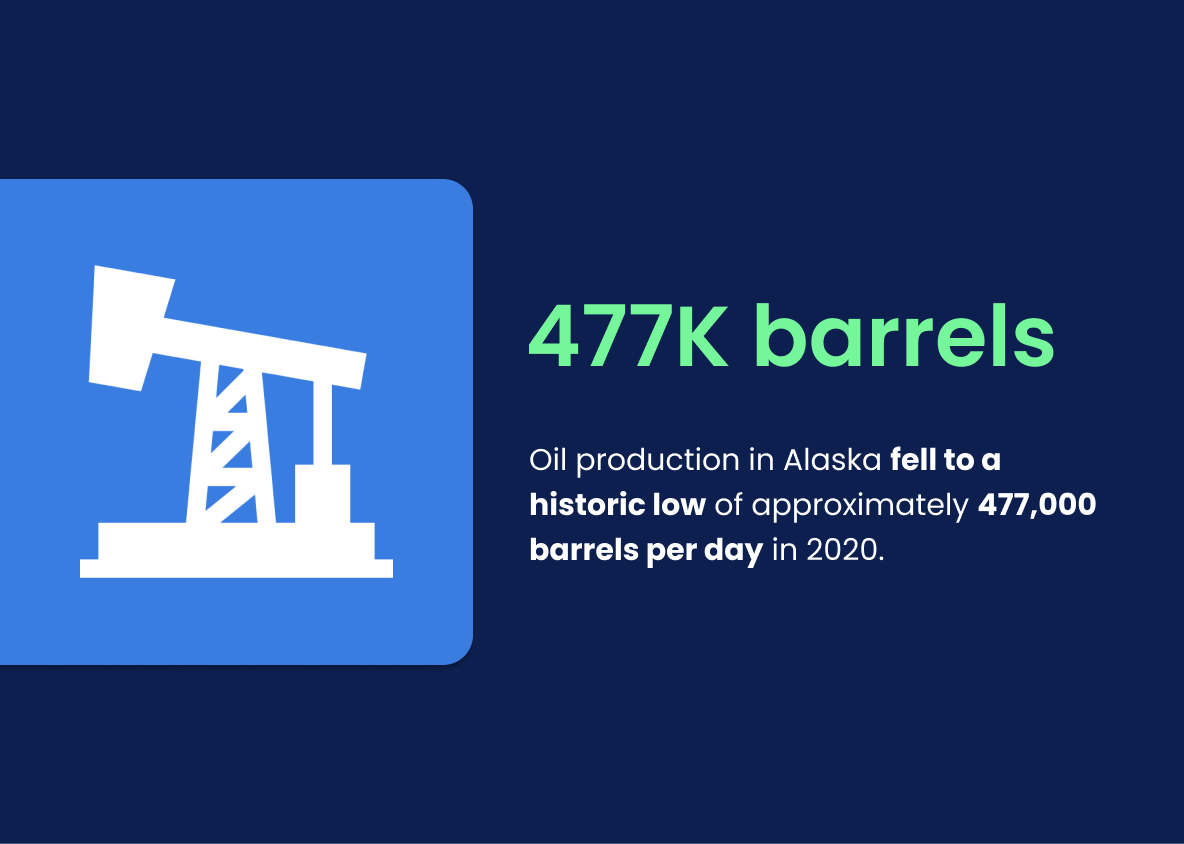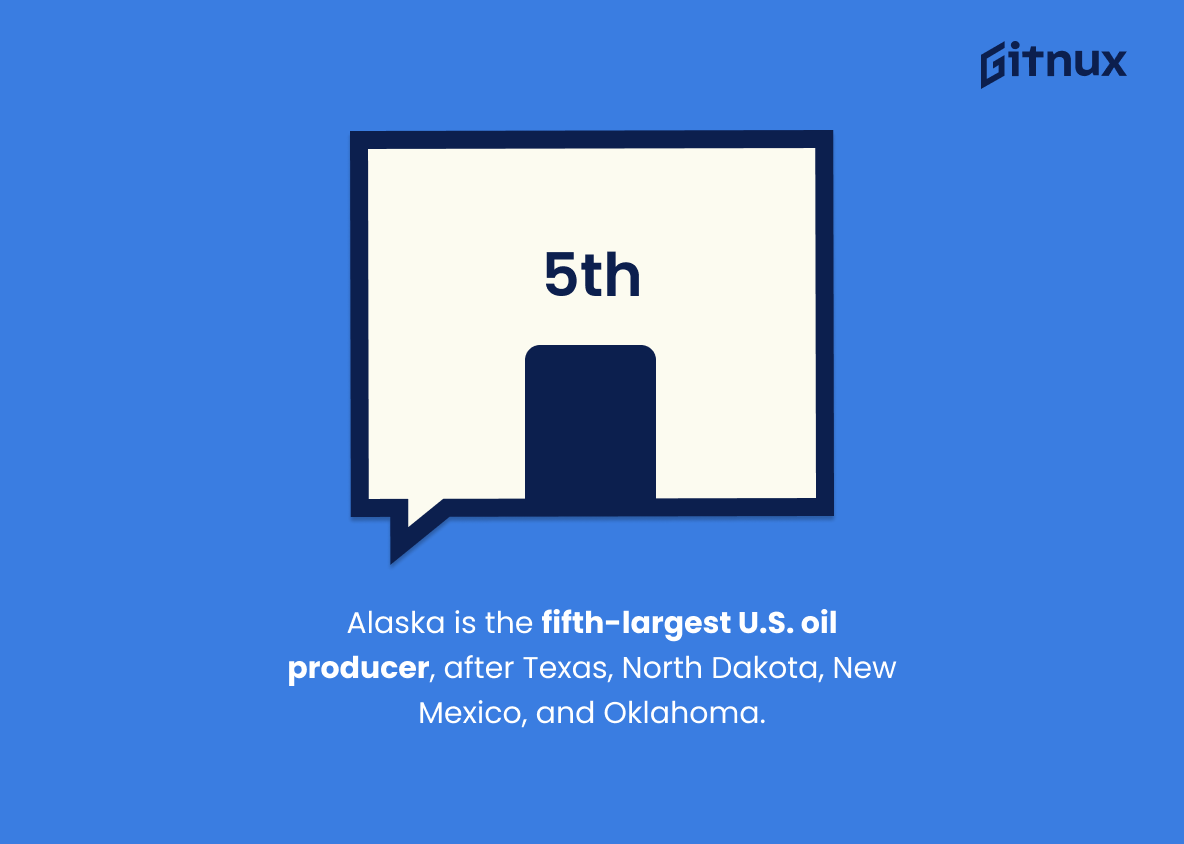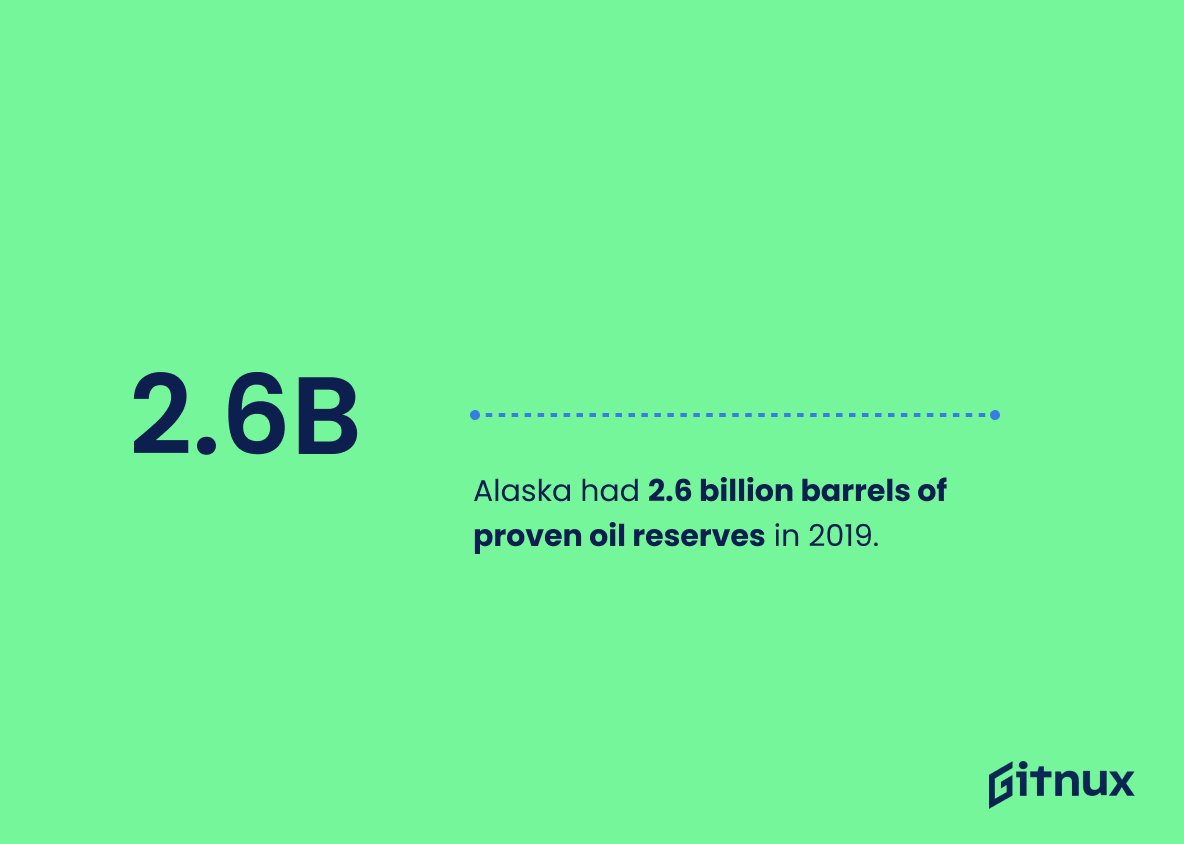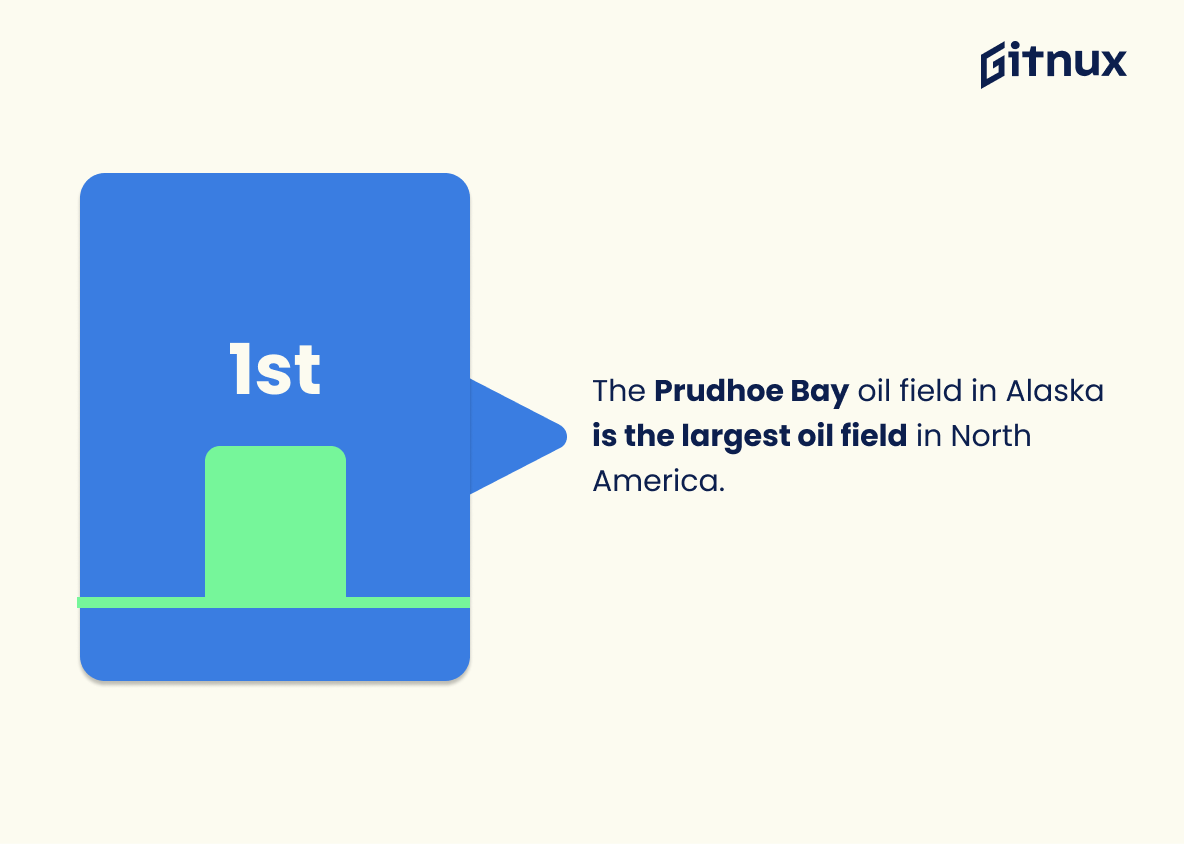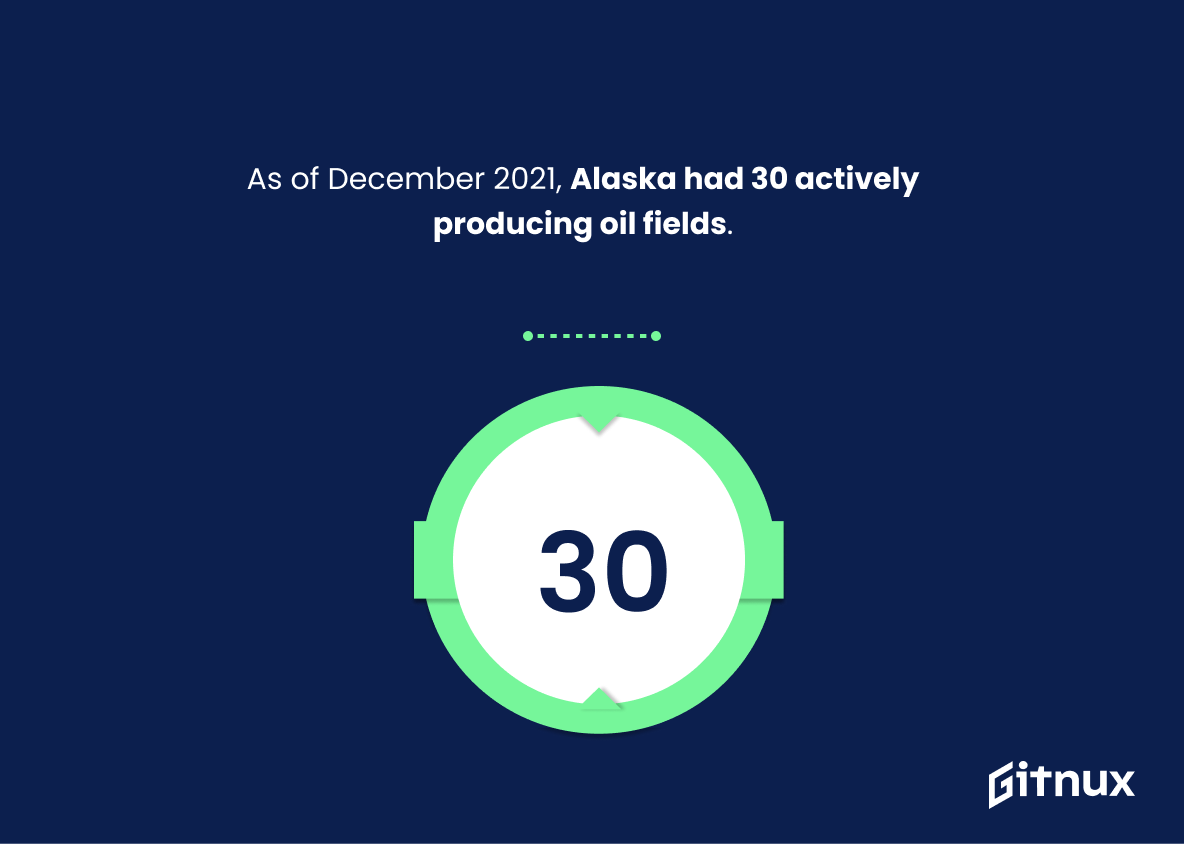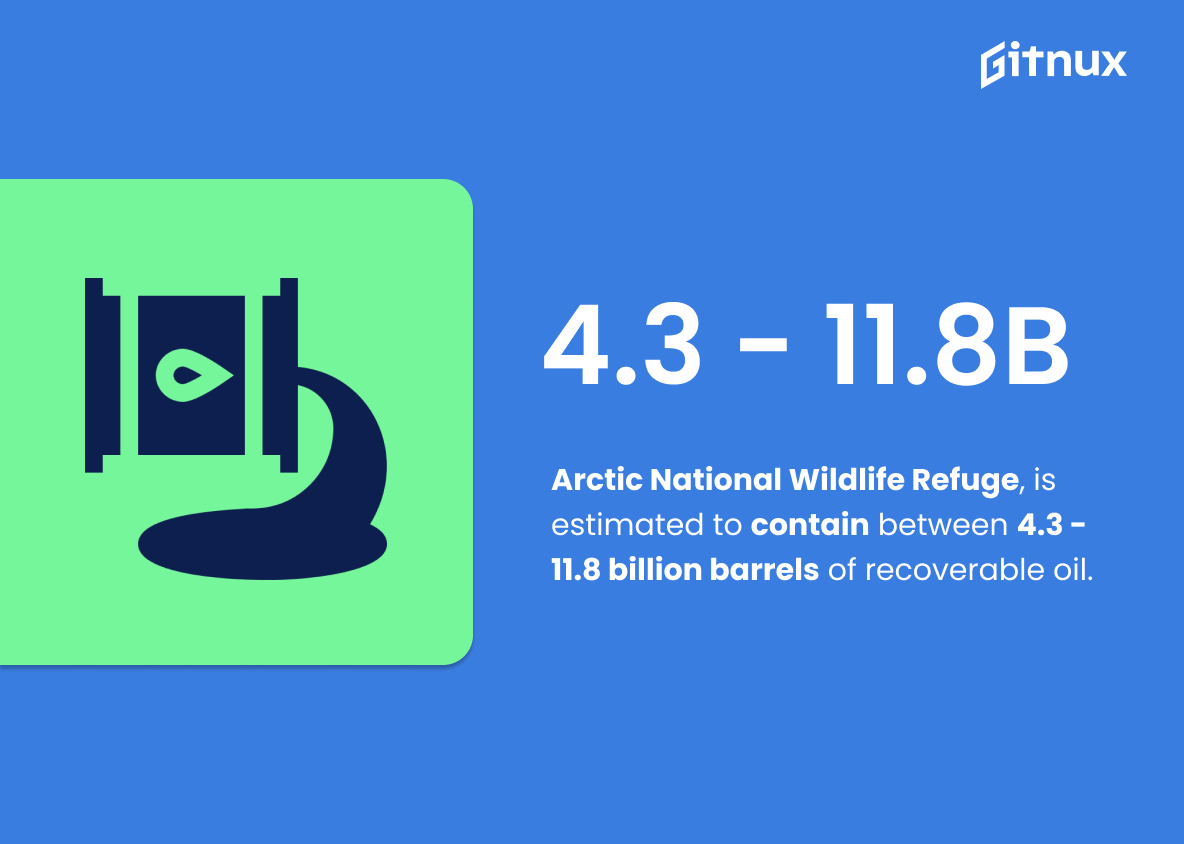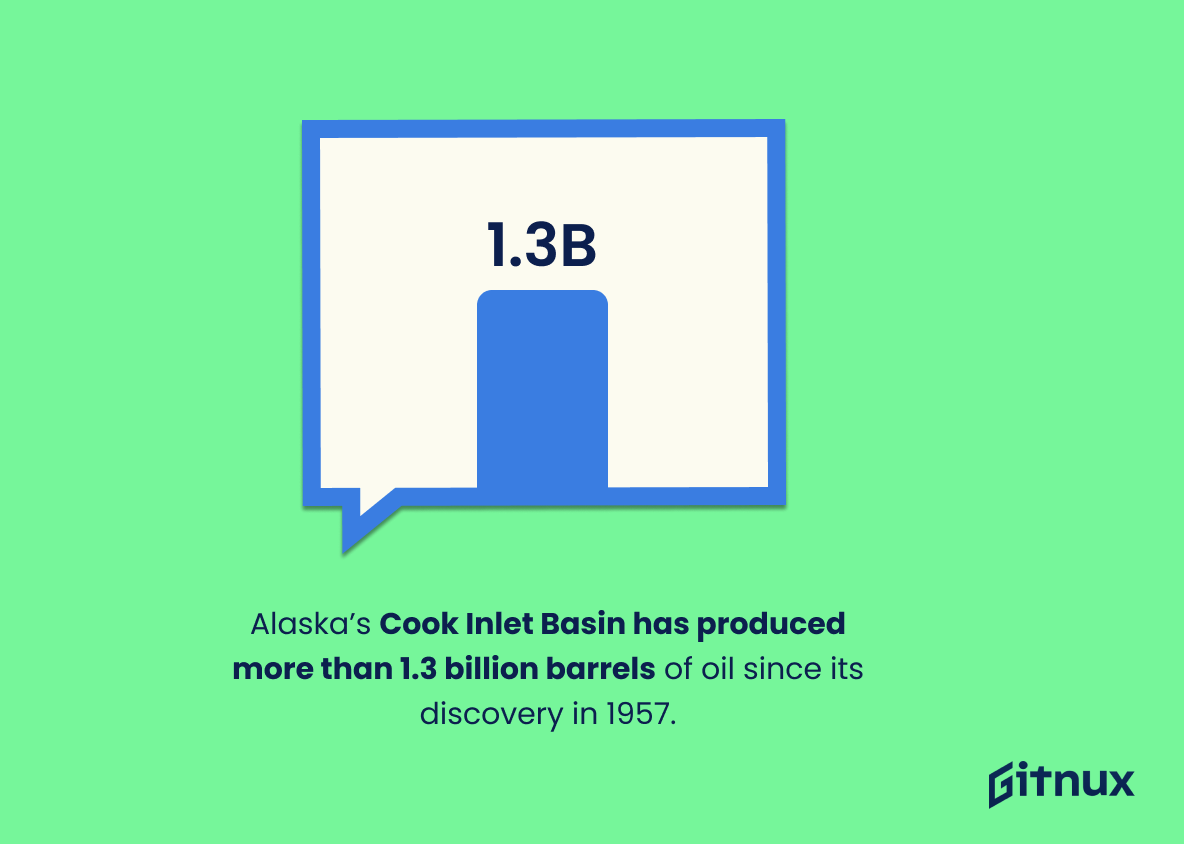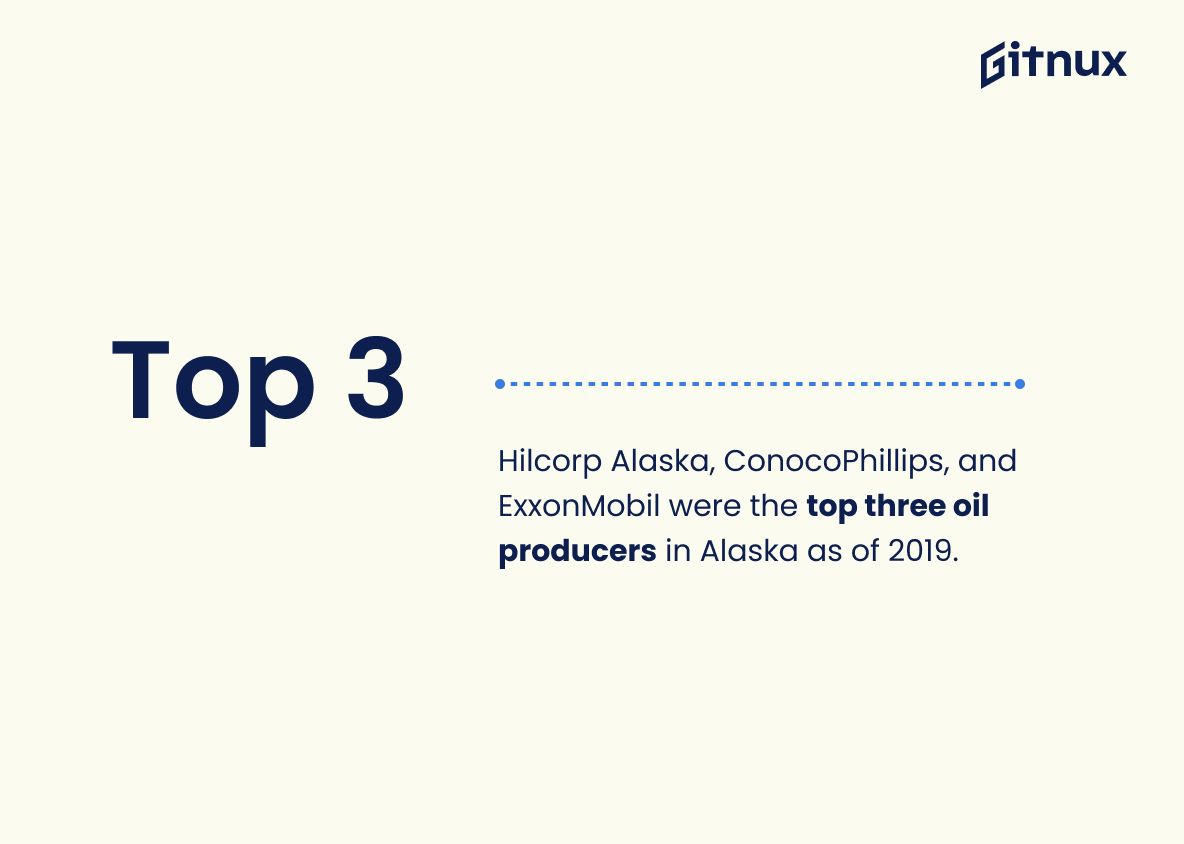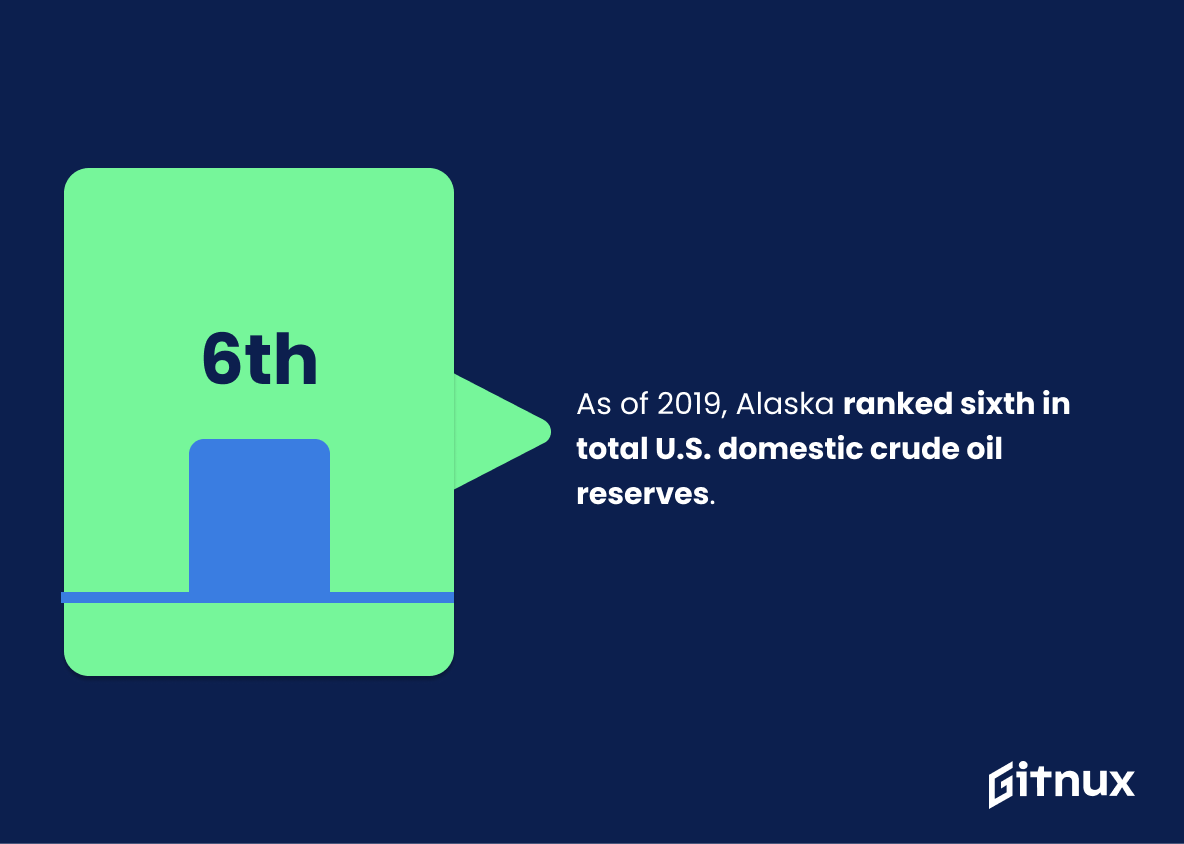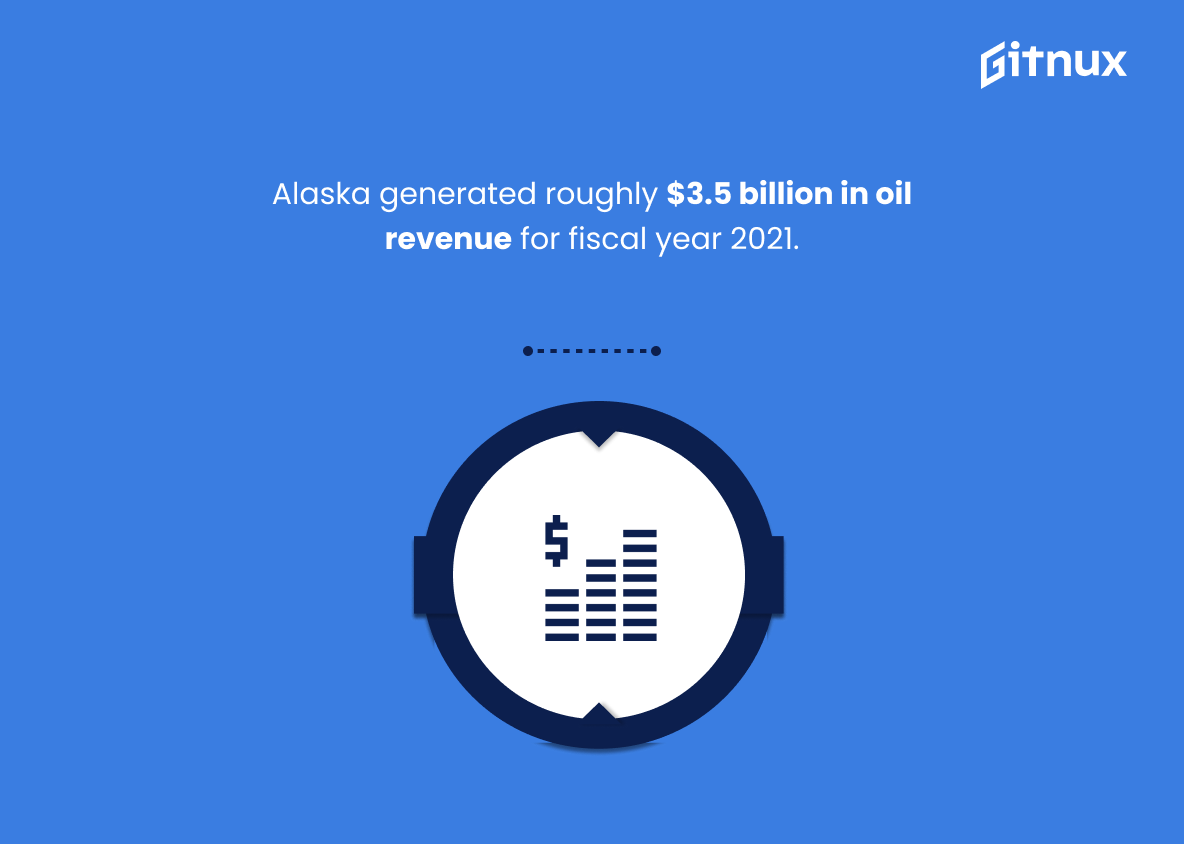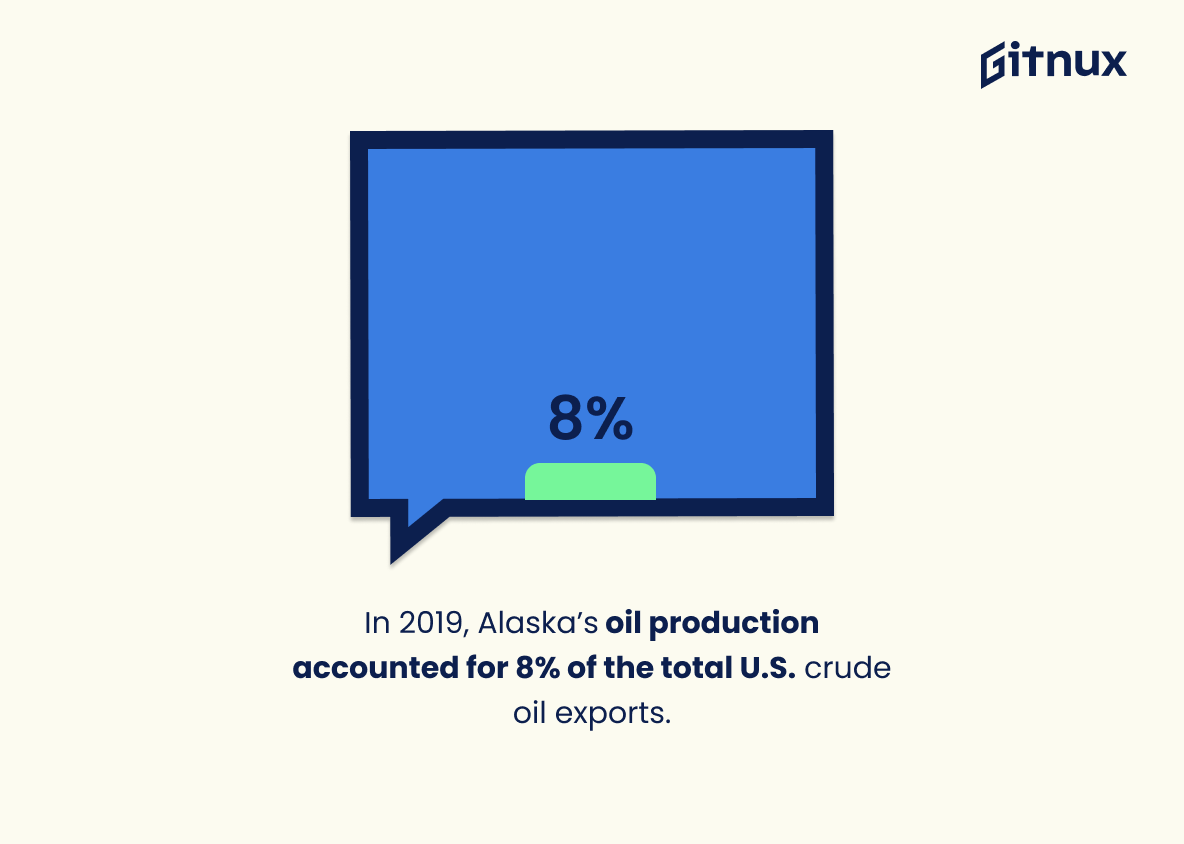Alaska is a major player in the U.S. oil industry, with its production accounting for 10% of total U.S. oil production and 8% of crude exports in 2019 alone. The state has seen both highs and lows over the years, from peaking at 2 million barrels per day to hitting historic lows due to declining output levels in 2020 – but it still remains one of the top five producing states nationwide and continues to be an important source of jobs and revenue for Alaska’s economy today.
In this blog post, we’ll explore some interesting facts about Alaska’s oil production statistics that will give you a better understanding of how this vital sector contributes to our nation as well as what lies ahead for Alaskan energy development projects like AIDEA’s $4 billion Pikka Unit project on the North Slope estimated to produce up 120,000 barrels per day by 2025.
This statistic serves as a benchmark for Alaska’s oil production, highlighting the peak of production in 1988. It provides a point of comparison for current production levels, allowing readers to gauge the progress of the industry over time.
In 2020, Alaska’s oil production accounted for 10% of total U.S. oil production.
This statistic is a testament to the importance of Alaska’s oil production in the United States. It highlights the significance of Alaska’s oil production in the overall U.S. oil production, and serves as a reminder of the state’s vital role in the nation’s energy supply.
Alaska Oil Production Statistics Overview
Oil production in Alaska fell to a historic low of approximately 477,000 barrels per day in 2020.
This statistic is a stark reminder of the impact of the global pandemic on Alaska’s oil production. It highlights the drastic decline in production, which has had a significant effect on the state’s economy. It serves as a warning of the potential consequences of the pandemic on the oil industry, and the need for careful management of resources in the future.
Alaska is the fifth-largest oil-producing state in the United States, behind Texas, North Dakota, New Mexico, and Oklahoma.
This statistic is a testament to the importance of Alaska’s oil production in the United States. It highlights the fact that Alaska is a major contributor to the nation’s oil production, ranking behind only four other states. This is a significant achievement for Alaska and speaks to the state’s commitment to energy production.
Alaska had 2.6 billion barrels of proven oil reserves in 2019.
The fact that Alaska had 2.6 billion barrels of proven oil reserves in 2019 is a testament to the state’s potential for oil production. This figure speaks to the vast resources available to the state, and the potential for Alaska to become a major player in the global oil market. With such a large reserve, Alaska could become a major supplier of oil to the world, and could potentially become a major economic force in the region.
The Prudhoe Bay oil field in Alaska is the largest oil field in North America.
This statistic is significant in the context of Alaska Oil Production Statistics because it highlights the importance of Prudhoe Bay as a major source of oil production in North America. It demonstrates the significance of Alaska’s oil production to the continent’s overall energy supply, and the potential for further development in the region.
As of December 2021, Alaska had 30 actively producing oil fields.
The fact that Alaska has 30 actively producing oil fields as of December 2021 is a testament to the state’s commitment to oil production. It shows that Alaska is still a major player in the oil industry, despite the challenges posed by the global pandemic. This statistic is a reminder that Alaska is still a major contributor to the global oil market and that its oil production is still a major economic driver for the state.
ANWR, the Arctic National Wildlife Refuge, is estimated to contain between 4.3 and 11.8 billion barrels of technically recoverable oil.
This statistic is of paramount importance when it comes to Alaska Oil Production Statistics, as it provides a clear indication of the potential for oil production in the Arctic National Wildlife Refuge. With estimates ranging from 4.3 to 11.8 billion barrels of technically recoverable oil, it is clear that the ANWR could be a major source of oil production for the state of Alaska.
Alaska’s Cook Inlet Basin has produced more than 1.3 billion barrels of oil since its discovery in 1957.
This statistic is a testament to the immense oil production potential of Alaska’s Cook Inlet Basin. It highlights the significance of the basin as a major source of oil production in the state, and serves as a reminder of the importance of the oil industry in Alaska’s economy.
Hilcorp Alaska, ConocoPhillips, and ExxonMobil were the top three oil producers in Alaska as of 2019.
This statistic is a testament to the power of the oil industry in Alaska. It shows that the top three oil producers in the state are Hilcorp Alaska, ConocoPhillips, and ExxonMobil, indicating that these companies have a strong presence in the state and are major players in the oil production industry. This information is important to consider when discussing Alaska’s oil production statistics, as it provides insight into the industry’s current state and who the major players are.
As of 2019, Alaska ranked sixth in total U.S. domestic crude oil reserves.
This statistic is a testament to the significance of Alaska’s oil reserves in the United States. It highlights the importance of Alaska’s oil production in the nation’s energy supply, and the potential for further growth in the future. It also serves as a reminder of the importance of Alaska’s oil industry to the state’s economy.
Alaska generated roughly $3.5 billion in oil revenue for fiscal year 2021.
The staggering $3.5 billion in oil revenue for fiscal year 2021 is a testament to the immense potential of Alaska’s oil production. It is a clear indication of the state’s ability to generate significant economic benefits from its natural resources. This impressive figure serves as a reminder of the importance of Alaska’s oil production in the global economy.
Alaska’s oil and gas industry paid an average annual wage of $140,520 in 2020.
The eye-popping statistic that Alaska’s oil and gas industry paid an average annual wage of $140,520 in 2020 is a testament to the lucrative nature of the industry in the state. This figure is a clear indication of the economic benefits that the oil and gas industry brings to Alaska, and serves as a reminder of the importance of the industry to the state’s economy.
In 2019, Alaska’s oil production accounted for 8% of the total U.S. crude oil exports.
This statistic is a testament to the importance of Alaska’s oil production in the United States. It highlights the fact that Alaska is a major contributor to the nation’s crude oil exports, and that its production is essential to the country’s energy needs. This statistic is a reminder of the importance of Alaska’s oil production and its role in the U.S. economy.
State-owned oil company Alaska Industrial Development and Export Authority (AIDEA) formed a partnership with private companies to invest $4 billion in a new oil project in the North Slope’s Pikka Unit, estimated to produce up to 120,000 barrels per day.
This statistic is a game-changer for Alaska’s oil production. The investment of $4 billion in the Pikka Unit is a major step forward in the state’s efforts to increase its oil production. The estimated 120,000 barrels per day that the project is expected to produce is a significant boost to Alaska’s oil production, and could have a major impact on the state’s economy.
Conclusion
Alaska has a long and storied history of oil production, with the state’s peak production occurring in 1988 at 2.1 million barrels per day. In 2020, Alaska accounted for 10% of total U.S. oil production and had an estimated 2.6 billion barrels of proven reserves that year as well as over 17 billion barrels produced from its North Slope region since 1957 when it was first discovered there.
The Prudhoe Bay field is the largest in North America while ANWR holds between 4-11 billion more technically recoverable reserves yet to be tapped into if approved by Congress or other governing bodies such as AIDEA who recently announced a $4 Billion investment project on the North Slope’s Pikka Unit which could produce up to 120,000 bpd once operationalized sometime later this decade or early next one depending on market conditions then prevailing . Oil revenue generated roughly $3.5Billion for fiscal 2021 alone supporting 110K jobs paying an average annual wage of 140K USD making it one of most lucrative industries within US borders today even though overall output fell to historic lows due mainly to Covid related demand destruction last year but still managed 8% share in exports globally despite all odds stacked against them proving their resilience & staying power going forward too.
References
0. – https://www.bsee.gov
1. – https://www.live.laborstats.alaska.gov
2. – https://www.alaskajournal.com
3. – https://www.eia.gov
4. – https://www.revenue.state.ak.us
5. – https://www.aidea.org
6. – https://www.dog.dnr.alaska.gov
7. – https://www.adn.com
8. – https://www.mustreadalaska.com
9. – https://www.usgs.gov
